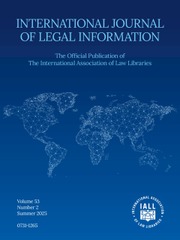The editors’ stated goal for A Research Agenda for Patent Law is to encourage scholarly dialogue on patent topics in anticipation of emerging challenges and to guide further research while shaping evolving priorities. The editors, London-based intellectual property law professors Noam Shemtov and Enrico Bonadio of Queen Mary University and the City Law School, respectively, fill the volume with nine separately authored chapters—one chapter penned by a practicing patent attorney and the rest written solely or in combination with another academic. While only one of these authors is affiliated with an institution outside of Europe, the global nature of patent law ensures the chapters rightfully explore their respective patent subjects in both the European Union (EU) and other jurisdictions.
Some chapters even take an explicitly comparative approach, with “Patenting strategies by pharmaceutical companies: a lawful use of the patent system or an abusive conduct?” an illustrative example outlining where the US and the EU legal regimes agree and differ. The chapter discusses how both the US and the EU allow pharmaceutical companies to engage in the “soft switch” form of “product hopping,” a practice where arguably trivial changes to a drug, combined with a strategy of outreach to medical providers, effectively extend the life of a patent. While authorities like the European Commission and European judiciary also allow the “hard switch” form of product hopping, which includes active withdrawal of old forms of a drug from the market to force patients to use new versions that are just beginning their patent terms, US courts prohibit this practice on antitrust grounds.
Not all ten authors contributing to this volume approach the concept of establishing a research agenda in the same way. Many chapters consist primarily of describing the outcomes of the current state of patent policy on a particular issue or subject of innovation (including heavy citations to the research exploring this policy), explaining how these outcomes could be improved if only certain policy changes were made. A few chapters do all this and then proceed to explicitly suggest future research that, if conducted, would facilitate these policy improvements. These chapters, including “A research agenda for standards-essential patents” and “Patents, social welfare and sustainability: considerations on the role of the patent system in incentivizing the UN Sustainable Development Goals,” better serve the goal outlined in the volume’s introduction.
While some chapters delve into great detail on specific technologies or the patent process, even novices to the subject encountering this volume are likely to understand the topic being discussed. The authors’ tone assumes readers have some familiarity with patent law regimes, but each essay nonetheless offers an adequate amount of background information to explain its underlying subject and issue to any focused reader.
The sources for authors’ claims are thoroughly footnoted, ensuring each essay can serve as a starting point for additional research on a subject. The index is detailed and should aid a researcher seeking to quickly check if a particular statute, case, technology, or patent issue is discussed in any of the volume’s chapters.
A Research Agenda for Patent Law will be most useful for researchers interested in deep discussions of patent law and policy. Its individual chapters are varied in topics and approaches so that few readers will find reason to read the volume cover to cover, the exception being a researcher happy for a thorough update on nine unrelated patent law topics. Most individual researchers are likely to engage with one chapter of this volume at a time, due to the chapter’s highly specific patent subject or issue.
A Research Agenda for Patent Law is a worthy investment for a large research law library, especially if the library has identified current patent law scholars and other researchers among its patron base.

